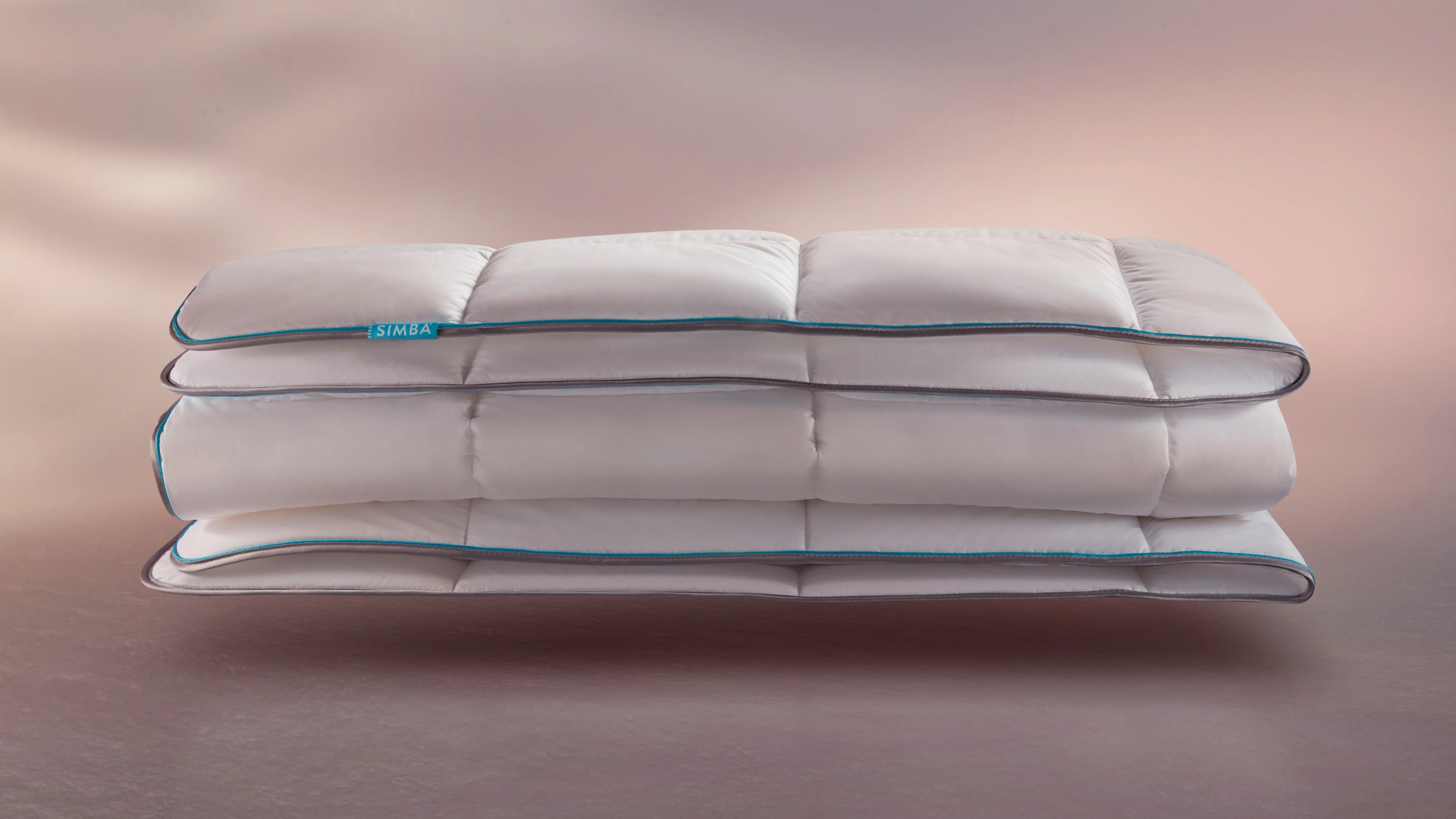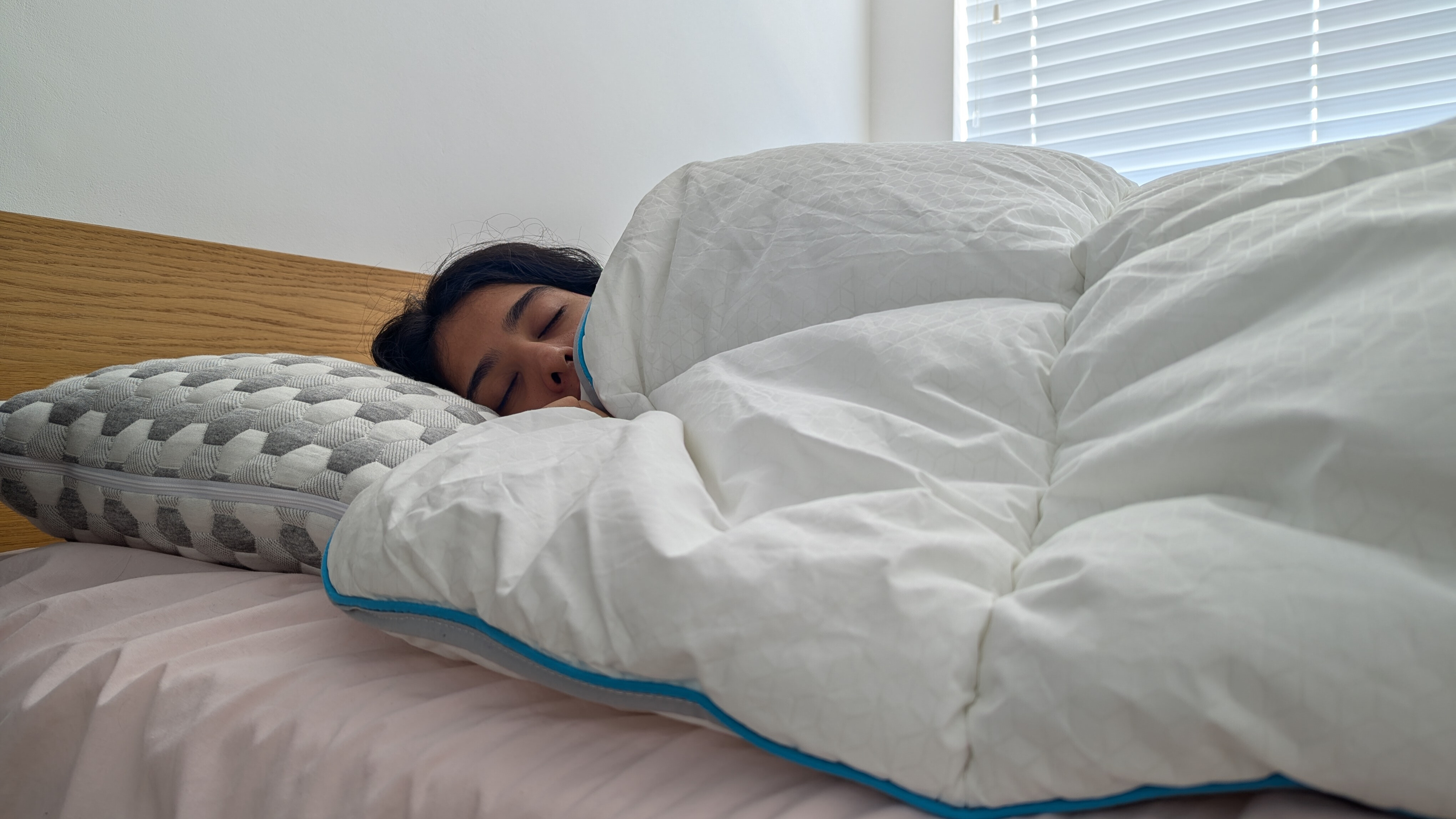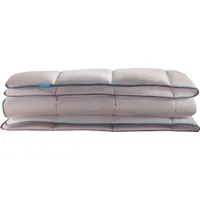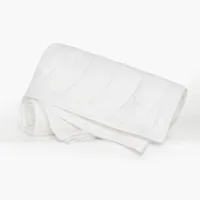"I didn't kick my covers off" — here’s how a simple bedding switch helped me sleep cooler
Struggling with overheating? All you need is a cooling duvet.

Summer is not all beach days, lemonade and lovely walks. Hot sleepers will know that this is also the season for night sweats, overheating and stuffiness. But what if I told you that all you need to do is one simple bedding swap to sleep cooler throughout hot summer nights?
While you might change your bedsheets from luscious sateen to breathable cotton to make warmer nights more bearable, what you actually need to switch is your duvet. Thanks to the latest tech in bedding, you can now find a duvet counterpart to the best cooling mattresses, designed for those prone to overheating during sleep.
I recently tried a cooling duvet myself and was frankly impressed by how it made my sleep better, so it's a solid recommendation from me. But first, let’s understand what makes it different from a regular one…
What is a cooling duvet?

A cooling duvet is one made from breathable materials ranging from cotton or natural down to hemp fibers, designed to dissipate excess heat during sleep.
These may also incorporate specialized cooling technology like phase change materials (PCMs) and cooling-gel infused fibers, which can regulate temperature and help you get a restorative night's sleep, even during the warmest weather.
However, a huge factor when choosing the best duvet for your sleep is the tog rating. Short for Thermal Overall Grade, the tog is simply a measure of how much heat your duvet retains. Higher the tog rating, the warmer your duvet.
While the standard duvet tog rating is 10.5, for summer you might need something even lighter — between 4.5 and 7.5.
Get instant access to breaking news, the hottest reviews, great deals and helpful tips.
Sticking to a duvet with a higher tog than 10.5 in the summer is a common mistake to make, and it could be sabotaging your sleep this summer.
The cooling duvet I tried
To see the benefits myself, I've been using the Simba Hybrid Duvet for the past few days. For context, I'd previously been sleeping with a cheaper department store microfiber duvet that made me overheat on particularly warm nights when the temperature was reaching 20°C (68°F).
The highlight of the Simba duvet is the signature Bio Renew fiber fill, which basically mimics the plush and airy comfort of natural down.

On top of the duvet, you'll find Simba's version of a phase change material: the Stratos Cool Touch Tech. According to the brand, "this is similar to the tech which keeps astronauts cool in space" and works to give you instant coolness. The bottom layer, on the other hand, is a plain cotton side which is soft, breathable and comfy to touch.
No one likes a duvet that gets clumped up, and the square stitched construction in the Simba hybrid duvet ensures that it never does, by preventing uneven distribution of the fill during sleep.
Being a fan of bedding products that can be used all year round, I've found this Simba duvet to be a perfect fit, thanks to its lighter construction and 10.5 tog rating.
Simba Hybrid Duvet: UK Single £139 at Simba
The Simba Hybrid Duvet is available in four different sizes (UK Single to Super King) starting from £139. This also includes a 30-night return policy, 1-year warranty and free fast shipping.
Buffy Breeze Comforter: was $190 now from $152 at Buffy
This is a great US alternative to the Simba Hybrid duvet I tried, made from breathable and light Lyocell fibers and a soft cotton cover. As the name suggests, it is designed to deliver maximum breathability, perfect for warmer locales and hot sleepers. You can now grab these up to 30% off which brings the price of a twin down from $190 to $152, while a queen is priced at $200 (was $250). You'll also get 50-night free returns, 3-year warranty and free shipping.
How the cooling duvet helped me sleep better
While I didn't find it to be frosty to the touch or as cooling as an aircon (which is a bit much to expect from a duvet), the Simba Hybrid Duvet maintained a neutral temperature perfect for summer sleep. Here are the details on how it changed my sleep:
1. I didn’t kick the covers off
Sleeping with the Simba Hybrid allowed me to get the recommended hours of rest. This means, no kicking away the sheets or constant shift in positions due to overheating or stuffiness.
It helped me sleep through the night and wake up feeling well rested. An important point to note here is that no one actually sleeps through the night and that waking up or stirring at the end of a sleep cycle is a normal occurrence.
However, what you should be paying attention to is how long you're awake for in the night, and how rested or tired you feel in the morning.

2. I still keep my "sleep cocoon"
If you're anything like me, you will understand that sleeping without a duvet, no matter how hot it can get, is simply not an option.
The feeling of security and comfort is not something I want to give up, but what awaits on the other side is overheating and nighttime sweating.
This is where a cooling duvet becomes the ultimate hero. Being a combination sleeper who usually ends up in a foetal position lying on my side, the Simba Hybrid served as the perfect partner for my ideal 'sleep cocoon'.
Another option is to add a top sheet to your cooling sleep set up — you can use it with the duvet (on warmer nights) or as a cover alone (when the temperature shoots up.)

3. Perfect for all-year round use
Being a bedding tester, I prefer fuss-free products that are suitable for use throughout the year by all types of sleepers.
Why? Firstly, stocking up on separate bedding for each season is not cost-effective for everybody (although it can benefit some, as a member of my team discovered when she switched her pillow for a cooler option this summer.)
Secondly, you might not have enough storage space, especially if you're in a smaller apartment.
The Simba Hybrid duvet checks all the boxes in this case, since it's perfect for summer being lightweight, while you can layer it up with other sleep accessories like the best weighted blankets for a cozy winter night too.

Becky is a Sleep Staff Writer at Tom’s Guide covering all things sleep-related including product reviews, research studies, news and explainers. She works on specialist bedding content and is responsible for buyer’s guides like the best pillows for all sleepers and best mattress protectors focusing on popular brands such as Tempur-Pedic, Avocado, Coop Home Goods and more. Becky is a PPA accredited journalist who is keen to explore the intricacies of sleep, its effects on skincare, mental wellbeing and work performance. While not thinking of sleep, she can be seen reading in cosy bookshops or learning about global food culture.
You must confirm your public display name before commenting
Please logout and then login again, you will then be prompted to enter your display name.


